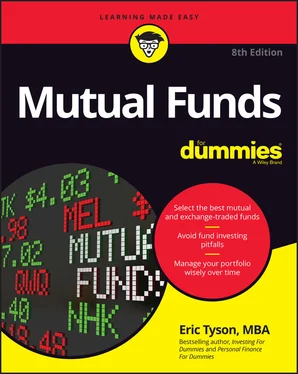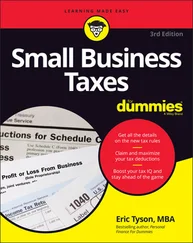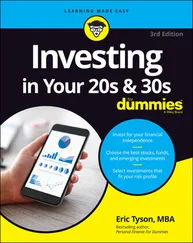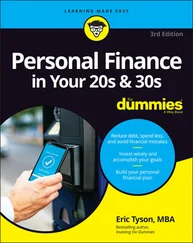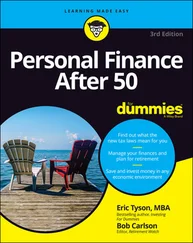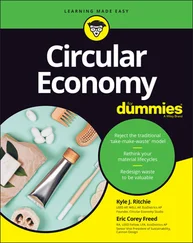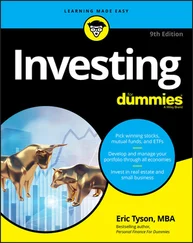Eric Tyson - Mutual Funds For Dummies
Здесь есть возможность читать онлайн «Eric Tyson - Mutual Funds For Dummies» — ознакомительный отрывок электронной книги совершенно бесплатно, а после прочтения отрывка купить полную версию. В некоторых случаях можно слушать аудио, скачать через торрент в формате fb2 и присутствует краткое содержание. Жанр: unrecognised, на английском языке. Описание произведения, (предисловие) а так же отзывы посетителей доступны на портале библиотеки ЛибКат.
- Название:Mutual Funds For Dummies
- Автор:
- Жанр:
- Год:неизвестен
- ISBN:нет данных
- Рейтинг книги:3 / 5. Голосов: 1
-
Избранное:Добавить в избранное
- Отзывы:
-
Ваша оценка:
- 60
- 1
- 2
- 3
- 4
- 5
Mutual Funds For Dummies: краткое содержание, описание и аннотация
Предлагаем к чтению аннотацию, описание, краткое содержание или предисловие (зависит от того, что написал сам автор книги «Mutual Funds For Dummies»). Если вы не нашли необходимую информацию о книге — напишите в комментариях, мы постараемся отыскать её.
Mutual Funds For Dummies
Mutual Funds For Dummies
Mutual Funds For Dummies — читать онлайн ознакомительный отрывок
Ниже представлен текст книги, разбитый по страницам. Система сохранения места последней прочитанной страницы, позволяет с удобством читать онлайн бесплатно книгу «Mutual Funds For Dummies», без необходимости каждый раз заново искать на чём Вы остановились. Поставьте закладку, и сможете в любой момент перейти на страницу, на которой закончили чтение.
Интервал:
Закладка:
Where to Go from Here
You don’t need to read this book from cover to cover. But if you’re a beginner or you want to fully immerse yourself in the world of fund investing, go for it! However, you may have some specific questions today, and you’ll want some other information tomorrow. No problem there, either. Mutual Funds For Dummies, 8th Edition, is well organized and easier to use than other fund-investing books. Use the table of contents or the index to speed your way toward what you need to know and get on with your life.
Part 1
Getting Started with Funds
IN THIS PART …
Understand investment options, risks, rewards, and diversification.
Discover the pros and cons of mutual and exchange-traded funds.
Get your financial house in order before investing in funds.
Chapter 1
Making More Money, Taking Less Risk
IN THIS CHAPTER
 Defining mutual funds and exchange-traded funds
Defining mutual funds and exchange-traded funds
 Understanding lending versus ownership investments
Understanding lending versus ownership investments
 Weighing your options
Weighing your options
 Seeing the big picture: Returns, risks, and risk reduction
Seeing the big picture: Returns, risks, and risk reduction
In my years of work as a financial advisor, educator, and a columnist answering many readers’ questions, I’ve seen the same, avoidable mistakes being made over and over. Often, these investing mistakes occurred for one simple reason: a lack of investment understanding. People didn’t know what their investing options were and why particular options were inferior or superior to others.
By reading this book, you can prevent yourself from making investment mistakes. And you can take advantage of an excellent investment vehicle: mutual funds — the best of which offer you diversification, which reduces your risks, and low-cost access to highly diversified portfolios and professional money managers, who can boost your returns with less risk. Funds are a vehicle to help you achieve your financial and personal goals. Mutual funds and exchange-traded funds can fit nicely in the context of your overall financial plans and goals. This chapter gives you an investment overview so you can see how mutual funds and exchange-traded funds fit into the overall investment world.
Introducing Mutual Funds and Exchange-Traded Funds
If you already understand stocks and bonds, their risks and potential returns, and the benefits of diversification, terrific. You can skip/breeze through some of this chapter. Most people, however, don’t really comprehend investment basics, which is one of the major reasons people make investment mistakes in the first place.
After you understand the specific types of securities (stocks, bonds, and so on) that funds can invest in, you’ve mastered one of the important building blocks to understanding mutual funds and exchange-traded funds. A mutual fund is a vehicle that holds other investments: When you invest in a mutual fund, you’re contributing to a big pool of money that a mutual fund manager uses to buy other investments, such as stocks, bonds, and/or other assets that meet the fund’s investment objectives.
Exchange-traded funds (ETFs) are a very close relative of mutual funds and differ from them in one particular way. ETFs trade like stocks on a stock exchange and thus can be bought or sold during the trading day when the financial markets are open. (In Chapter 2, I explain one exception to this rule. A type of mutual fund, known as a closed-end fund, which accounts for a mere 1 percent of mutual fund assets, trades on a stock exchange during the trading day and has a fixed number of shares outstanding.)
Differences in investment objectives are how funds broadly categorize themselves, like the way an automaker labels a car a sedan or a sport utility vehicle. This label helps you, the buyer, have a general picture of the product even before you see the specifics. On the dealer’s lot, the salespeople take for granted that you know what sedan and sport utility vehicle mean. But what if the salesperson asks you whether you want a Pegasus or a Stegosaurus? If you don’t know what those names mean, how can you decide?
Fund terms, such as municipal bond fund or small-cap stock fund, are thrown around casually. Fact is, thanks to our spending-oriented culture, too many folks know car models better than types of funds! In this chapter (and in Chapter 2), I explain the investment and fund terms and concepts that many writers assume you already know (or perhaps that they don’t understand well enough themselves to explain to you). But don’t take the plunge into funds until you determine your overall financial needs and goals.
Making Sense of Investments
Your eyes can perceive dozens of different colors, and hundreds, if not thousands, of shades in between. In fact, you can see so many colors that you can easily forget what you discovered back in your early school days — that all colors are based on some combination of the three primary colors: red, blue, and yellow. Well, believe it or not, the world of investments is even simpler than that. The seemingly infinite number of investments out there is based on just two primary kinds of investments: lending investments and ownership investments.
Lending investments: Interest on your money
Lending is a type of investment in which the lender charges the borrower a fee (generally known as interest ) until the original loan (typically known as the principal ) gets paid back. Familiar lending investments include bank certificates of deposit (CDs), United States (U.S.) Treasury bills, and bonds issued by corporations, such as Chipotle.
In each case, you’re lending your money to an organization — the bank, the federal government, or a company — that pays you an agreed-upon rate of interest. You’re also promised that your principal (the original amount that you loaned) will be returned to you in full on a specific date.
The best thing that can happen with a lending investment is that you’re paid all the interest in addition to your original investment, as promised. Although getting your original investment back with the promised interest won’t make you rich, this result isn’t bad, given that the investment landscape is littered with the carcasses of failed investments that return you nothing — including lunch money loans that you never see repaid!
 Lending investments have several drawbacks:
Lending investments have several drawbacks:
You may not get everything you were promised. Under extenuating circumstances, promises get broken. When a company goes bankrupt (remember Bear Stearns, Enron, Lehman, Sears, WorldCom, and so on), for example, you can lose all or part of your original investment (from purchased bonds).
You get what you were promised, but because of the ravages of inflation, your money is simply worth less than you expected it to be worth. Your money has less purchasing power than you thought it would. Suppose that you put $5,000 into an 18-year lending investment that yielded 4 percent. You planned to use it in 18 years to pay for one year of college. Although a year of college cost $5,000 when you invested the money, college costs rose 8 percent a year; so in 18 years when you needed the money, one year of college cost nearly $20,000. But your investment, yielding just 4 percent, would be worth only around $10,100 — nearly 50 percent short of the cost of college because the cost of college rose faster than did the value of your investment.
Читать дальшеИнтервал:
Закладка:
Похожие книги на «Mutual Funds For Dummies»
Представляем Вашему вниманию похожие книги на «Mutual Funds For Dummies» списком для выбора. Мы отобрали схожую по названию и смыслу литературу в надежде предоставить читателям больше вариантов отыскать новые, интересные, ещё непрочитанные произведения.
Обсуждение, отзывы о книге «Mutual Funds For Dummies» и просто собственные мнения читателей. Оставьте ваши комментарии, напишите, что Вы думаете о произведении, его смысле или главных героях. Укажите что конкретно понравилось, а что нет, и почему Вы так считаете.
